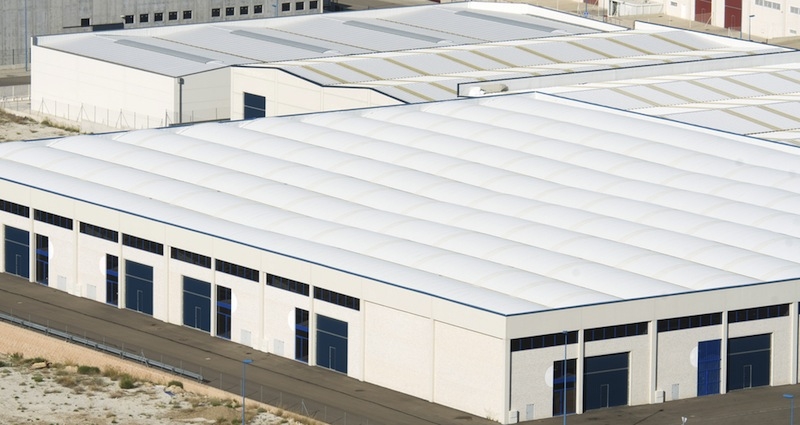
Commercial
Institutional
News
White, green or black roofs? Berkeley Lab declares an economic winner
January 22, 2014 - Looking strictly at the economic costs and benefits of three different roof types—black, white and green (a.k.a. vegetated)—Lawrence Berkeley National Laboratory researchers have found in a new study that white roofs are the most cost-effective over a 50-year time span.
January 23, 2014 By Anthony Capkun

A new report, “Economic Comparison of White, Green, and Black Flat Roofs in the United States” by Julian Sproul, Benjamin Mandel and Arthur Rosenfeld of Berkeley Lab—along with Man Pun Wan of Nanyang Technological University in Singapore—provides a direct economic comparison of these three roof types.
“White roofs win based on the purely economic factors we included, and black roofs should be phased out,” said Rosenfeld.
The study analyzes 22 commercial flat roof projects in the States in which two or more roof types were considered. The researchers conducted a 50-year life cycle cost analysis, assuming a 20-year service life for white and black roofs, and a 40-year service life for green roofs.
PHOTO (at bottom): The costs and benefits difference stack that has the highest net present value shows the roof type that is most cost-effective. Parentheses around dollar values indicate negative values.
While the high installation cost of green roofs sets them back in economic terms, their environmental and amenity benefits may at least partially mitigate their financial burden. Rosenfeld acknowledges their economic analysis does not capture all of the benefits of a green roof. For example, rooftop gardens provide stormwater management, an appreciable benefit in cities with sewage overflow issues, while helping to cool the roof’s surface, as well as the air. Green roofs may also give building occupants the opportunity to enjoy green space where they live or work.
“We leave open the possibility that other factors may make green roofs more attractive or more beneficial options in certain scenarios,” said Mandel. “The relative costs and benefits do vary by circumstance.”
Unlike white roofs, though, green roofs do not offset climate change. White roofs are more reflective than green roofs, reflecting roughly three times more sunlight back into the atmosphere and, therefore, absorbing less sunlight at earth’s surface. By absorbing less sunlight than either green or black roofs, white roofs offset a portion of the warming effect from greenhouse gas emissions.
“Both white and green roofs do a good job at cooling the building and cooling the air in the city, but white roofs are three times more effective at countering climate change than green roofs,” said Rosenfeld.
The 50-year life cycle cost analysis found that even the most inexpensive kind of green roof (with no public access and consisting of only sedum, or prairie grass) costs $7 per square foot more than black roofs over 50 years, while white roofs save $2 per square foot compared to black roofs. In other words, white roofs cost $9 per square foot less than green roofs over 50 years, or $0.30 per square foot each year.
The researchers acknowledge that their data is “somewhat sparse” but contend their analysis is valuable in that it is the first to compare the economic costs and energy savings benefits of all three roof types.
“When we started the study it wasn’t obvious that white roofs would still be more cost-effective over the long run, taking into account the longer service time of a green roof,” Mandel said.
Furthermore, while the economic results are interesting, it also highlights the need to include factors such health and environment in a more comprehensive analysis. “We’ve recognized the limitations of an analysis that’s only economic,” Mandel said. “We would want to include these other factors in any future study.”
Black roofs, note the researchers, pose a major health risk in cities that see high temperatures in the summer. “In Chicago’s July 1995 heat wave, a major risk factor in mortality was living on the top floor of a building with a black roof,” said Rosenfeld.
For that reason, he believes this latest study points out the importance of government policymaking. “White doesn’t win out over black by that much in economic terms, so government has a role to ban or phase out the use of black or dark roofs, at least in warm climates, because they pose a large negative health risk,” he said.
Print this page